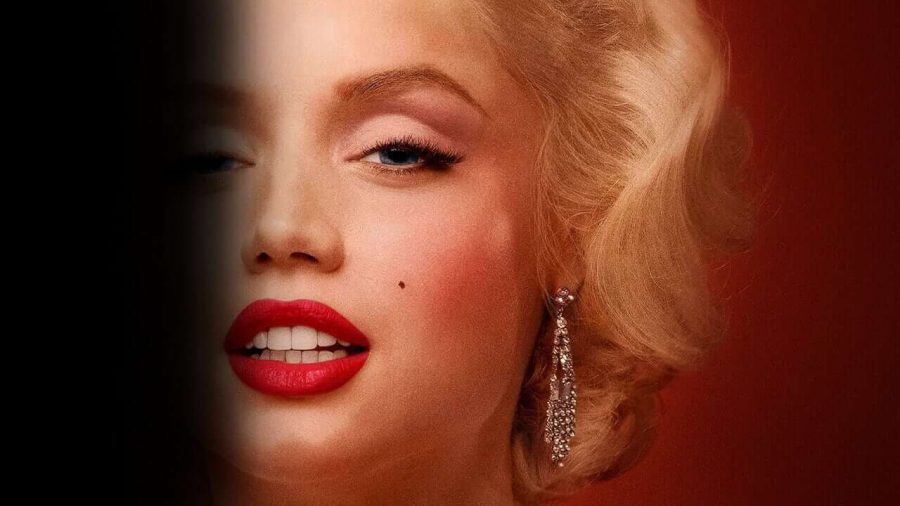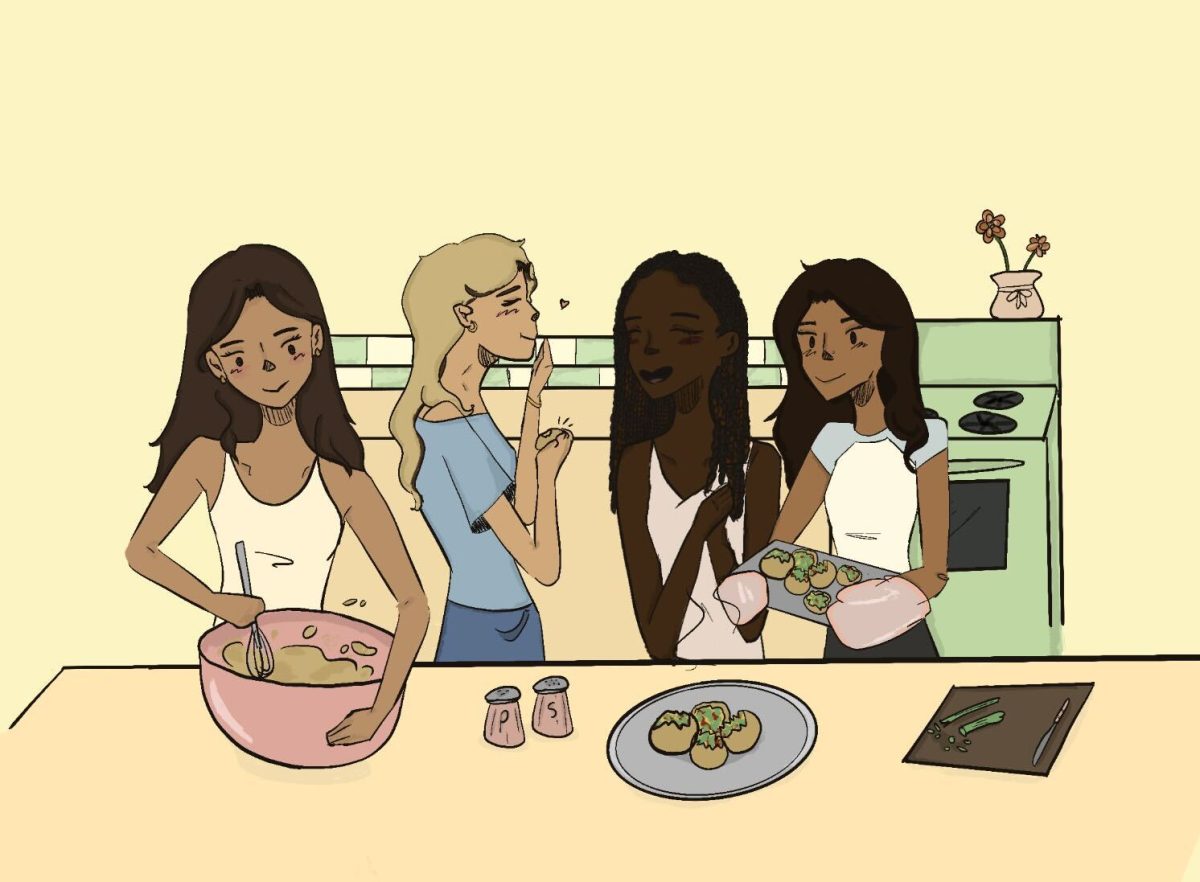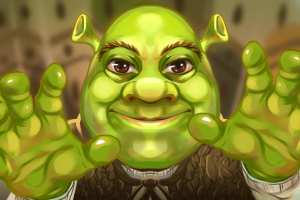Movie Review: “Blonde” (2022)
Oct 16, 2022
The woefully inaccurate but stunningly beautiful “Blonde” (2022) managed to spark controversy for its discourse; however, a good portion of the criticism seems to be much ado about nothing. Thus, with a fine-toothed comb and a magnifying glass, senior writer Fabian Garcia breaks down what “Blonde” is really trying to say, with maybe a few bumps along the way.
The second attempt at adapting Joyce Carol Oates’s 2000 novel “Blonde” comes in the form of Netflix’s newest original movie of the same name. Already making headlines for its rare NC-17 rating, the high-profile release was further underscored by public response toward the subject matter of the film and the nature of the main subject’s adaptation on screen. Despite this, those involved with the film maintain that their portrayal of Marilyn Monroe (Ana De Armas) is a work of fiction, nothing more. Is it possible that the borrowed name from the hallmark film actress is really meant to act as a vessel for what is potentially a deeper narrative about Hollywood and the concept of the actor itself? Is it equally possible that the long journey to get to those arguments is riddled with blunders more common than one would prefer? Yes, all of the above.
“Blonde” has nothing to hide. It always reveals its hand right before it begins to play, insistent on telegraphing exactly what the character onscreen is feeling whether it’s through unfathomable camera tricks or not-so-subtle visual metaphors. Aspect ratios bend and flex liberally and palettes switch from technicolor to monochrome at the drop of a hat.
As Monroe feels trapped in her spiral of vitriol and exploitation, suddenly the frame tightens around her face, and the aspect ratio boxes itself in, the greyscale photography emphasizing the poignant shadows cast across her face. A long shot presents a ravenous theater applauding the screen before them, Monroe center stage, the frame outstretched as wide as possible in full and glorious color. While these are basic conventions and used accordingly, they’re often broad strokes when compared to the minutiae of what’s really happening.
The most prominent dilemma that “Blonde” faces is the sheer fact that there are only so many ways to communicate the same feeling, the same emotion, without teetering into territory that feels gratuitous and grotesque. Writer and director Andrew Dominik’s remedy for this issue is bloating the film full of pretty images and cutting-edge cinematography in order to maintain a consistent aesthetic language — an antibiotic to a contagious superbug. Against all odds, “Blonde” makes it possible to prove a point a little too well. A rather moot point at that.
Cinematographer Chayse Irvin has worked on many music videos and music films in the past, including Beyonce’s “Lemonade” film and Sampha’s “Process” short, and it would appear he’s taken a lot of those sensibilities and applied them to “Blonde” in an overt fashion. There’s a noticeable amount of care put into crafting the world of “Blonde,” with each scene deftly created to look as gorgeous as humanly possible. A new gimmick is constantly being applied in order to communicate some underlying mood, much like you would see in a high-budget music video.
A SnorriCam rig is used to communicate emotional distress in two different scenes. A well-positioned mirror shot features Norma Jeane begging Monroe to “come back” right before a dramatic shift occurs between the sobbing face of Norma Jeane and sunny disposition of Monroe. A hazy filter and shallow lens is applied to Monroe right before her abortion to visually express her absentia. The obvious nods to the ever-surrealist tendencies of David Lynch are a clever homage but an equally pale imitation. The film relies so heavily on visuals alone to convey what are, in all honesty, very straightforward sentiments. It’s not an inherently obnoxious thing, but rather a moment that is never properly seized. To reiterate, if graded on looks alone, “Blonde” would stand in a league of its own, but unfortunately, that isn’t the case here.
There are serious ramifications for leaving the more profound concepts to be spoon-fed to the audience in ham-fisted ways. The writing too often suffers from appearing properly disingenuous. Monroe whispers to her aborted fetus about her lapsed pregnancy in a scene that feels uncharacteristically supernatural. She habitually struggles to meet the demands of men she seeks validation from due to an absent father figure. She feels the need to prove her worth either sexually or intellectually to her face-warped fans. There’s a evident lack of subtlety and nuance in articulating these notions, which in some cases comes across as if Dominik thinks the audience is too stupid to understand what’s really going on.
In addition, not much is done to flesh out the abuse the film capitalizes on. There is no catharsis to this apparent idée fixe “Blonde” has with mistreatment. We watch her become victimized, we can see things aren’t right, and we can empathize with what’s happening to her, but nothing more is being said or mediated. In its near three-hour runtime, the message it carries can be diminished to a few sentences, let alone the thousand words a picture deserves.
With all that said, is it fair to say these flaws come across as disrespectful? Well, the answer isn’t all that simple. Marilyn Monroe is treated as a character, and Norma Jeane properly follows suit. Yet, the majority has found that this route has somehow bastardized the person it’s based on, even though it’s ironically not any different from what the public has already done to Norma Jeane Baker as a person. Above all else, the film contends the fact that a narrative has already attached itself to Norma Jeane whether we like it or not. What the film seeks to do is blur that line further. Dominik alleges we will never truly know who Marilyn Monroe is, or was, nor do we really deserve to.
In contrast to the various themes of the film, nothing substantial about Monroe’s actual life or career is explicitly revealed to the viewer. “Blonde” assumes you already know everything about her, but in reality, we’re only getting snapshots of the famous star, recognizable pieces everyone is bound to associate and identify with. It opts to recontextualize those moments in a new light, unlike a real biopic which would present them as a definitive fact. Watching “Blonde” play out is like looking at those photos you’d see of Marilyn Monroe on mood boards or 50s-themed diners and creating the story around them, tracing the line that eventually fell to the hands of fate. In this case, the film excels at using these references, however much like its other subtleties, or lack thereof, they don’t always land quite how they’re intended to. It’s not easy to identify with someone based on iconography alone. Although, to Armas’s credit, she does sell the look and feel of Marilyn Monroe to an uncanny degree, enough to where those moments of weakness could continue to suspend your disbelief.
For what it’s worth, “Blonde” doesn’t seem concerned with being an ultra-realistic, true-to-form biopic about the convoluted life of Marilyn Monroe. It also doesn’t seem interested in being a neo-feminist condemnation of Hollywood and the abuse actresses suffered during this period, nor does it really need to be. Instead, we have a hyper-stylized portrait of psychosis, the drama of a Hollywood Star misunderstood, misappropriated, and minimized. It’s far more content with being a metaphor of itself. Monroe laments that all movies do is “cut, cut, cut,” and in practice that does typically seem to be the case for “Blonde.”
In most circumstances, Monroe’s pain feels like a spectacle, which does make it easy to interpret the film as exploitative and borderline disrespectful. However, that narrative can’t help but feel a little cut-and-dry beside the unmistakable polish applied to so much of the film.
Much like David Fincher in his 2020 feature “Mank,” Dominik had the impossible task of recreating 1950’s Hollywood in the modern day. It’s a feat easier said than done and was achieved almost flawlessly. It’s hard to deny Armas’ compelling ability to channel Monroe. She isn’t a carbon copy, but instead captures the essence of a timeless movie star, and you can’t help but feel like you’re watching her grace the silver screen once again. The plethora of breathtaking shots throughout the film looks almost one-of-a-kind, if not a bit intoxicating. Distilling the work to a meek sexploitation film is grossly dismissive.
“Blonde” goes way above the call of duty but manages to miss a few of its marks, each of which varies in significance. Did the world of cinema really need this depiction of Marilyn Monroe as a helpless victim? Are we really just adding to the noise? Not necessarily. Not unlike how Norma Jeane is trapped in “Blonde,” the real-life Norma Jeane is forever confined to the collective memory of society: the pinnacle sex symbol of Hollywood’s golden age, known for playing a “dumb blonde,” despite never actually being either of those things. In an all too cruel and common twist, the fact of the matter is, even real life can be inaccurate.
Grade: B-
Directed by: Andrew Dominik
Starring: Ana De Armas, Adrien Brody
Release Date: September 16, 2022
Rated: NC-17
Image courtesy of Netflix

















